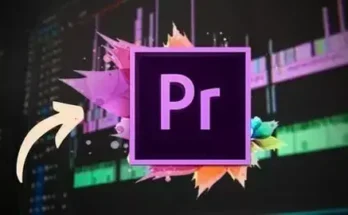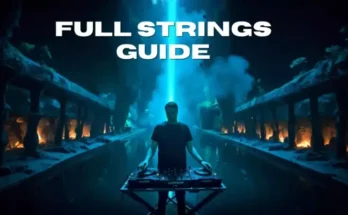Publisher: Truefire | Language: English
Video: MP4, 960×540 (16:9), 971 Kbps, 29.970 fps
Audio: MP3, 192 Kbps, 48 Khz, 2 channels
Size: 398 Mb
Accelerated Study Program for Blues Guitar Arpeggios
Any great blues player will tell you that arpeggios are the secret to always hitting the right notes, at the right time. But how do you leverage the power of arpeggios as a soloing tool without sounding like you’re just playing arpeggios? Jeff McErlain has the answer!
This Blues Arpeggios edition of Take 5 from Jeff McErlain is an accelerated curriculum designed to help you unlock the improvisational power of arpeggios when crafting solos without having to struggle through a lot of tedious exercises.
”Arpeggios are the most important thing a musician can work on for improvising. Scales, of course, are very important, but as you may have encountered in your own playing, you often hit notes that sound wrong yet are in the scale. This is because the best sounding notes to resolve to are the ones that are in the chord. Arpeggios are derived from scales as each scale contains seven chords.
This course is designed to help you navigate a blues by using arpeggios as opposed to thinking scales. I find when I think about improvising out of the scale, I play very “scaly”. In other words, it is often uninspired and not very musical. When I think about improvising by embellishing arpeggios, I find my playing to be much more inspired. And you will too!”
You’ll start the course with a quick primer during which Jeff will introduce you to dominant 7th arpeggios — the key to playing over any major or dominant blues. He’ll show you a number of ways to play arpeggios, all over the fingerboard, to unlock your potential for creative blues improvisation.
Jeff will then guide you through 5 arpeggio-based performance studies, progressing from basic to more advanced applications of the approach.
Level 1: Blues Arpeggios
”Our first performance study is a slow blues in the key of A. The three chords in a blues are A7 spelled AC#EG, D7 spelled DF#AC, and E7 spelled EG#BD. Take your time to familiarize yourself with the fingerings I showed you in the introduction section. See how the chords and arpeggios lay on top of each other so you can visualize both the chords and arpeggios. This performance is pretty simple note wise by design, that doesn’t mean it’s easy to play. I suggest listening to the exercise and try to memorize the melody and hear the changes. Remember these are exercises so it may not be the most engaging solo ever created, but that’s on purpose. The idea here is to see the chord arpeggios and sounds played simply over the changes. In this performance study, I stuck to three arpeggio fingerings in position. You can see the chord shapes right inside of the arpeggios and that’s really important!”
Level 2: Blues Arpeggios
”In this performance study, we are going to play over a rumba groove and I’m going to use the arpeggios in a classic blues fashion. Something you might hear the great BB King do. This style of playing, this mixture of pentatonic scale and arpeggios probably sounds pretty familiar. It should as it is one of the standard approaches to what we might call “sweet” blues playing. Generally speaking, Texas-style blues is a bit more minor pentatonic-based whereas, Chicago style blues (BB King) is a little more major pentatonic based. I will freely admit that learning all of your dominant seventh chord arpeggios in position for the I7, IV7, and V7 is a tall order and will require lots of work. There really is no way around it if you truly want to become a better player, that is a simple fact. It is essential that you know all the names of all the notes on the neck just like you know how to spell your name.”
Level 3: Blues Arpeggios
”So how do I learn all of these arpeggios you may ask. Well, the answer is patience and diligence, that’s a shock, isn’t it? 🙂 first thing, memorize the fingerings I give you and the first section and practice them every day. I also suggest learning how to spell the chords away from of the guitar, write them on a piece of paper, spell them while you are driving, in my case I would do these kinds of things in the subway. Knowing how to spell the chords will come first finding those notes on the fingerboard takes more time, so it will be a mixture of fingerings, Patterns, and knowing the note names together at first. Eventually, you’ll just know the notes when you play them. The next level after that is hearing the notes and knowing which chord tone you are playing sonically. That takes even more time!:-)”
Level 4: Blues Arpeggios
”In this blues arpeggio study we are going to take a look at using the arpeggios horizontally. We’ll take a look at the concept of knowing the arpeggios on one string and combine it with another string to form 6ths. We’ll use these 6ths to outline the chord changes which is a great and very common sound in the blues. I’d highly recommend practicing your major scales on one string at a time as well, then in 6ths. On this one I’m playing over a nice slow blues in 6/8 time, I really love this feel.”
Level 5: Blues Arpeggios
”In this final and most difficult study, we are going to look at incorporating some patterns into the blues and pick up the tempo a bit. Patterns are excellent to practice as not only do they help improve technique they develop your melodic sense on the instrument. You will create muscle and synapse memory that you can draw upon when improvising. I’m not going to lie, this one is a pain in the butt to play at tempo. But luckily we have the excellent addition of sound slice here at TrueFire to help us practice slowly. Take this one measure by measure and as you can see I am very much just outlining the chords using a melodic pattern derived from the arpeggio fingering.”
Jeff will explain and demonstrate all of the key concepts and approaches along the way. You’ll get standard notation and tabs for all of the Performance Studies. Plus, Jeff includes all of the rhythm tracks for you to work with on your own. In addition, you’ll be able to loop or slow down any of the videos so that you can work with the lessons at your own pace.
[toggle title=”Home page”]https://goo.gl/My88kW[/toggle]

http://alfalink.to/5a5e0d98e00af1b4ead2
Please REPORT in Comment Broken Links




